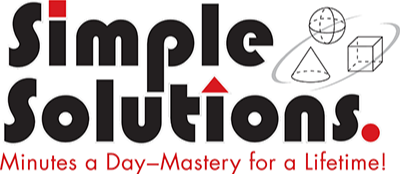How the Simple Solutions Approach Works to Improve Learning Retention
All of our workbooks are specifically designed to increase learning retention among students. We use three time-tested, research-based strategies to increase student success in the classroom. Just minutes a day of this practice helps strengthen skills, increase academic achievement, build student confidence, and raise standardized test scores.
Retrieval Practice
When students complete a Simple Solutions lesson, they repeatedly retrieve information from memory. The mental effort it takes to do this strengthens their neural pathways, making it easier to recall the information in the future. Retrieval practice allows students to truly master concepts, retain what they’ve learned, and apply their learning to other situations.
Spacing
Our materials spread retrieval practice out over time in a process called “spacing.” Students systematically revisit and recall skills and concepts in short lessons throughout the school year or over the summer. This approach differs from traditional textbooks or learning materials that focus on massed practice, or “cramming.” When students cram, they may learn the material, but it resides in short-term memory and is quickly forgotten. Students who practice spacing benefit from long-term learning retention. They learn the material more deeply and are better able to transfer their learning to new situations.
Interleaving
Traditional textbooks and other materials rely on massed (blocked) practice. The lessons go over one concept repeatedly and move onto the next. The Simple Solutions approach is different. Each of our lessons provides a variety of questions or problems using concepts students have already learned. Instead of using the same approach for the whole page, students must think about which strategy they’ll use to get the answer.
Start Increasing Learning Retention with Simple Solutions
Ready to incorporate Simple Solutions into your teaching? Reach out to our team to get samples and pricing information. You can also visit our research page to learn more about retrieval practice, spacing, and interleaving strategies.

